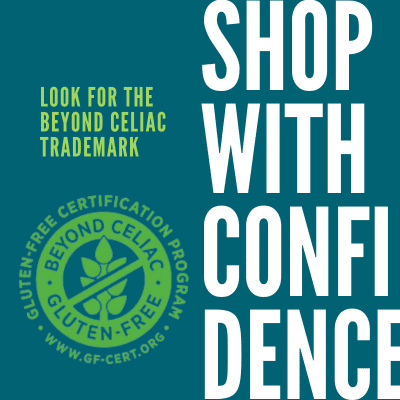Celiac Disease and Lactose Intolerance
What is Lactose Intolerance?
Lactose intolerance is the inability to digest or absorb lactose, which is a type of sugar found in milk and other dairy products. Common symptoms of lactose intolerance include stomach ache, gas, bloating and diarrhea. These symptoms occur when people eat or drink dairy products, and the degree of toleration varies from person to person. This means that some people are affected by a small amount of lactose, while others can consume quite a lot before they are affected. It is important to note that lactose intolerance is not an allergy, as people with a milk allergy can react to even the smallest amount of dairy foods.
What is the Connection between Lactose Intolerance and Celiac Disease?
- In newly diagnosed celiac disease patients, secondary lactose intolerance is common due to the loss of lactase, an enzyme that digests milk sugar along the lining of the small intestine
- The damage that gluten causes in the small intestine is the main factor in the lack of lactase for people with celiac disease
- While following a strict gluten-free diet, the gut is able to heal, making lactose intolerance temporary in most celiac disease patients
- It is important to make sure that those with lactose intolerance still consume adequate amounts of calcium. Low lactose foods that are generally well tolerated include aged cheese (cheddar, Swiss, etc.), some yogurts and lactose-removed products (lactose-free milk). Nondairy sources of calcium include salmon (with the bones), broccoli and spinach.
Gluten and Lactose Intolerance
A 2015 study showed that some with a celiac disease diagnosis that went on a gluten-free diet were actually doing so in reaction to symptoms caused by lactose intolerance rather than a non-celiac gluten sensitivity (mistakenly referred to as gluten intolerance).
Additionally, research suggests that gluten alone may not be responsible for the symptoms produced by the condition currently called gluten sensitivity. Instead, it is showing that perhaps FODMAPs, a group of poorly digested carbohydrates, may be the cause of the symptoms instead. It is also important to note that wheat, barley and rye — gluten-containing grains — are all high in FODMAPs.
Celiac Disease and Dairy
Lactose intolerance is often a symptom of celiac disease. It usually resolves itself after following a strict gluten-free diet.
Learn more about gluten and dairy:
A study found that a cow’s milk protein allergy could be the culprit when some children don’t recover on the gluten-free diet. Researchers found that eliminating cow’s milk led to a rapid return to normal in asymptomatic kids whose blood test and biopsy results previously showed ongoing celiac disease damage.
Where Can I Learn More?
Do you or a family member suffer from lactose intolerance? You may have celiac disease. Find out now. Take our Celiac Disease Symptoms Checklist.



